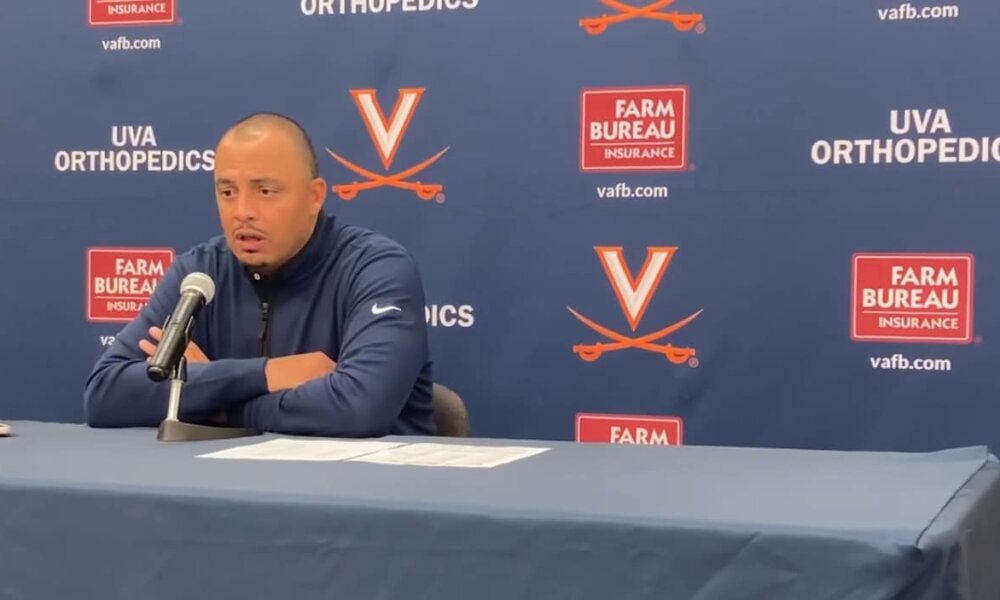Richmond Times-Dispatch
Mike Barber – Oct 18, 2023
Ricky Rahne can’t help but push back when he hears the safety concerns about playing football on modern-day artificial turf.
“I played at Franklin Field when the lines at Franklin Field were an inch and a half above the turf because they would literally repaint it with actual paint on it all the time,” Rahne, the Old Dominion football coach and a former Cornell quarterback said this week. “If you didn’t pay attention when you were taking a drop, you might trip over it. These fields now are significantly, in my opinion, safer than they used to be. All of football is safer than it used to be, besides the fact that the guys are bigger, faster, stronger. Everything else about it is safer.”
As the NFL Players Association pushes to get rid of artificial turf playing fields over fears that they’re responsible for lower leg injuries, college coaches don’t seem to share those concerns.
In Virginia, while the Commonwealth’s two ACC programs – Virginia and Virginia Tech – play their home games on natural grass surfaces, the three Group of Five schools – James Madison, Liberty and Old Dominion – all play and practice on artificial turf.
Nationwide, 94 schools playing FBS football use artificial surfaces while 39 play on grass, according to the Associated Press.
“From a maintenance and upkeep standpoint, it made the most sense,” JMU spokesperson Kevin Warner said. “To us, it was a pretty clear choice.”
In fact, JMU is so comfortable with its FieldTurf surface, it rarely if ever practices on its grass fields. The week leading up to the Virginia game, for example, it practiced exclusively on the turf at Bridgeforth Stadium, despite the fact that UVa’s Scott Stadium – where the Dukes ended up winning 36-35 – is a grass surface.
The cost of installing, maintaining and replacing artificial turf fields (which need to be replaced every 7-10 years) is far less than the price tag for natural grass surfaces, school officials said. So, at the Group of Five level, where revenue is lower than the Power Five tier Virginia and Virginia Tech occupy, that has been the preference.
James Madison installed a new FieldTurf brand surface at Bridgeforth Stadium in Harrisonburg in 2019, the same year Old Dominion put new FieldTurf in at Ballard Stadium in Norfolk.
Liberty just installed a new Astroturf 3D3 Rootzone Blend field in 2022.
“Never have had an issue with it with injuries or anything like that, as far as we know,” Liberty senior associate athletic director for internal operations Mickey Guridy said. “They’re tested every year to make sure they’re playable and not dangerous. As we change them out, we look to see what the best version of turf is and try to keep those updated with the best version.”
While research is inconclusive regarding the injury impact of playing on grass versus turf, the NFLPA believes many injuries – including the Achilles tendon tear suffered by New York Jets quarterback Aaron Rogers in the first game of this season – can be attributed to the artificial surfaces.
Last month, it called on the NFL to switch to all grass fields.
The NFL noted that a second player, Baltimore Ravens running back J.K. Dobbins also suffered an Achilles tear on the league’s opening weekend – and his injury occurred on a natural grass field.
Rahne and his boss, Old Dominion athletic director Wood Selig, said they’d be interested to see real data on injuries on turf versus those on grass.
“We’ve discussed it but everything we’ve seen has been anecdotal evidence,” Selig said. “I haven’t seen a real scientific study with results. When you buy a turf field from the various turf manufacturers, they’re always quick to say that their fields have better compression tests and are generally more forgiving than natural grass. At least that’s what they represent.
Virginia and Virginia Tech both play their games on natural grass but have artificial surfaces at their indoor practice facilities, adjacent to grass fields. UVa coach Tony Elliott said his preference for grass is more a sentimental, traditional one and he does not have any concerns about letting his team practice on the turf field.
“My preference is grass. I just think that’s football, in my opinion,” Elliott said. “I love the game, so I love the smell of the game. … We haven’t noticed any trends that would make us think that practicing on turf is leading to more injuries. So, I don’t have any concerns with playing on it or with practicing on it, but my preference is grass. I just like how grass feels.”
That’s a fair representation of college coaches level of concern up and down the east coast.
“I know it’s a topic of discussion nationally,” said Georgia Southern coach Clay Helton, whose team competes in the Sun Belt Conference with JMU and ODU. “We just laid brand new turf down at Paulson (Stadium). It’s not been an issue for us and our training facility just got brand new turf and it hasn’t been an issue. I know it’s a discussion that’s out there in the NFL. They do a tremendous job of studying safety. I’ll let people a lot smarter than me study those. I’ll try to worry about points and wins.”

